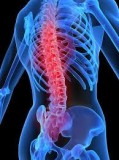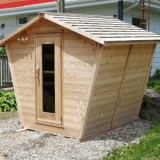
Lumbar Spine Degenerative Joint Disease Treatment in New Jersey
Anatomy & BackgroundThe thoracic spine or mid back is the largest section of the back and includes 12 vertebrae with an intervertebral disc in-between each. The vertebrae are the bony building blocks of the back and spine. They are designed to protect the spinal cord provide support and structure to the spine and carry the weight of the head neck and trunk. The vertebrae of each section of the spine are slightly different and specific to the function of that area.Spinal and Facet JointsAll thoracic vertebral levels consist of three joints. There is one joint consisting of the intervertebral discs which connect the bodies of the vertebra. There are also two posterior and lateral joints with one on each side called facet joints. The facet joints provide support stability and facilitate motion of the thoracic spine.Facet joints are synovial joints which means they have smooth shiny contact surfaces called articular cartilage. The articular cartilage allows the bones to slide freely over each other with reduced friction and stress. Each joint is also surrounded by a protective sleeve called a capsule and is lubricated by synovial fluid. The facet joints can become irritated and inflamed producing pain and dysfunction.Each thoracic vertebra has a pair of ribs one on each side. The twelve ribs form the thoracic cage and serve to protect the vital organs of the body (lungs heart liver kidneys etc.) The nerves of the thoracic spine provide sensory and muscle innervations to the trunk and part of each arm. Additionally the internal organs of the body supply these nerves.The thoracic spine has less movement than the cervical and lumbar spine. The greatest amount of movement is forward bending. The ribs limit side bending and rotational or turning motions of the mid back.Degenerative joint diseaseArthritis is a non-infectious progressive disorder of the joints. The normal articular joint cartilage is smooth white and translucent. In early arthritis or joint degeneration the cartilage becomes yellow and opaque with localized areas of softening and roughening of the surfaces. As degeneration progresses the soft areas become cracked and worn exposing bone under the cartilage. Eventually osteophytes (spurs of new bone) covered by cartilage form at the edge of the joint. As mechanical wear increases the cartilage cells are unable to repair themselves.Read more information s redefinehealthcare.com lumbar-spine-degenerative-joint-disease Redefine Healthcare 2500 Morris Ave Union NJ 07083 732-906-9600s redefinehealthcare.comRedefine Healthcare 10 Parsonage Rd Suite 208 Edison NJ 08837 732-906-9600s redefinehealthcare.com
-
Category: Spa, wellness
Important!
There are a lot of advertisers on Advertigo. We cannot check them one by one.
You work hard for your money and you want a company you can rely on when you are buying or selling things. That’s why we want to help you protect yourself from fraud. In this section, you’ll find informative tips and other useful material to stay informed and help reduce your chances of falling victim to scammers.
Please understand that Advertigo.net is a free service to help buyers and sellers (and etc.) find one another. Advertigo.net is not involved in any transactions and can not police the actions of our many users.
Useful links
Similar ads

Diagnostic Testing X-Rays EMG&rsquos and NCV&rsquos
Diagnostic testing is essential to the basic management of patient care allowing our physicians to...
La Clinica
Podiatrist Maspeth
Please come check out our beautiful office At Advanced Podiatry of Plainview our priority is...
Jamestaylor

Sauna Benefits
The Sauna Shop tells all the sauna benefits and provides all the information related to...
The Sauna Shop
Hiring Massage Therapists
Are you an independent massage therapist looking for more work Email me asap for opportunities...
Becky Torres
Massage, A Basic Knead - Price: $50.00 an hour
Massage it s a necessity.....not a luxury Don t let age body or inexperience keep...
Beth
Bay Area Health and Wellness DRUG/ALCOHOL Mediical Detox - Price
Bay Area Health and Wellness offers Medical Detox for all Substance Abuse Cases at a...
Tate Williams
massage therapy
It is said that you get the greatest benefit when massage therapy is part of...
Massage Connection OBT
Massage connection works only with professionals
Massage connection works only with professionals who have a certification to offer you the best...
Massage Connection OBT
How to Successfully Parent Tweens and Teens Class.
Raising your tweens and teens does not have to be a matter of trailand error...
Tara OShea
HAIR GALORE!!!
Are you one that loves your weave How does having a weave that is soooo...
SHAUNTEZ ALLEN